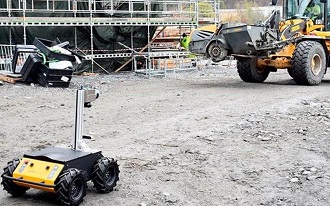 Friday, September 27, 2024
Friday, September 27, 2024  Friday, September 27, 2024
Friday, September 27, 2024 
The construction industry is in desperate need of an automated shake-up. With a serious skills shortage, limited resources, and outdated data collection practices, automation and robotics could save the industry from stagnation.
But digitization is coming for construction. Already robots are entering development sites, offering new capabilities that are humanly impossible, or simply providing the accuracy and continuity that are so crucial in the industry. Part one of this article will focus on robotics companies that are upgrading on-site capabilities to address the skills shortage that threatens to suffocate the construction industry.
Similar to the mining and oil and gas industries, construction has been sluggish when it comes to automation, although advanced technologies such as laser scanners and smart sensors are widely utilized on-site, and digitization is spreading through the industry. But just as these other industries have begun to embrace automation, construction is beginning to transition away from ineffective manual processes towards a more data-driven approach. “The construction industry is full of information stored on scraps of paper,” says Stuart Maggs, CEO of Scaled Robotics, “we can’t learn from previous work because we can’t compare notes—the ability to learn from data is incredibly valuable.” Digitization has grown more popular in construction, particularly Building Information Modeling (BIM) used to visualize construction sites and projects in 3D, but there are still simply not enough skilled workers on-site to implement plans effectively. As an industry that consists largely of dangerous, repetitive and unpleasant tasks, robots have a lot of scope to take some pressure off the construction industry and bring further digitization and innovation.
Scaled Robotics’ robot collects on-site data for their BIM software, navigating around the construction site using waypoints set in advance to drive semi-autonomously. This data is then dynamically added to a map, classified and color-coded according to its level of completion, and deviations such as warped beams are presented visually in a heatmap. “It’s just impossible to do all this measurement, a surveyor would usually only check 5-10% of the elements,” says Maggs, “so this [robotics and digitization] allows you to easily verify that what you intended to build is actually being built.” Robotics in construction then is augmenting human labor by “giving the site manager extra abilities that they didn’t have before,” says Maggs, but it is also enhancing the digitization already within the industry, feeding much more granular data into more detailed models. As Maggs puts it, “we either innovate and bring in new abilities or the industry just stagnates and employment becomes even more of an issue.”